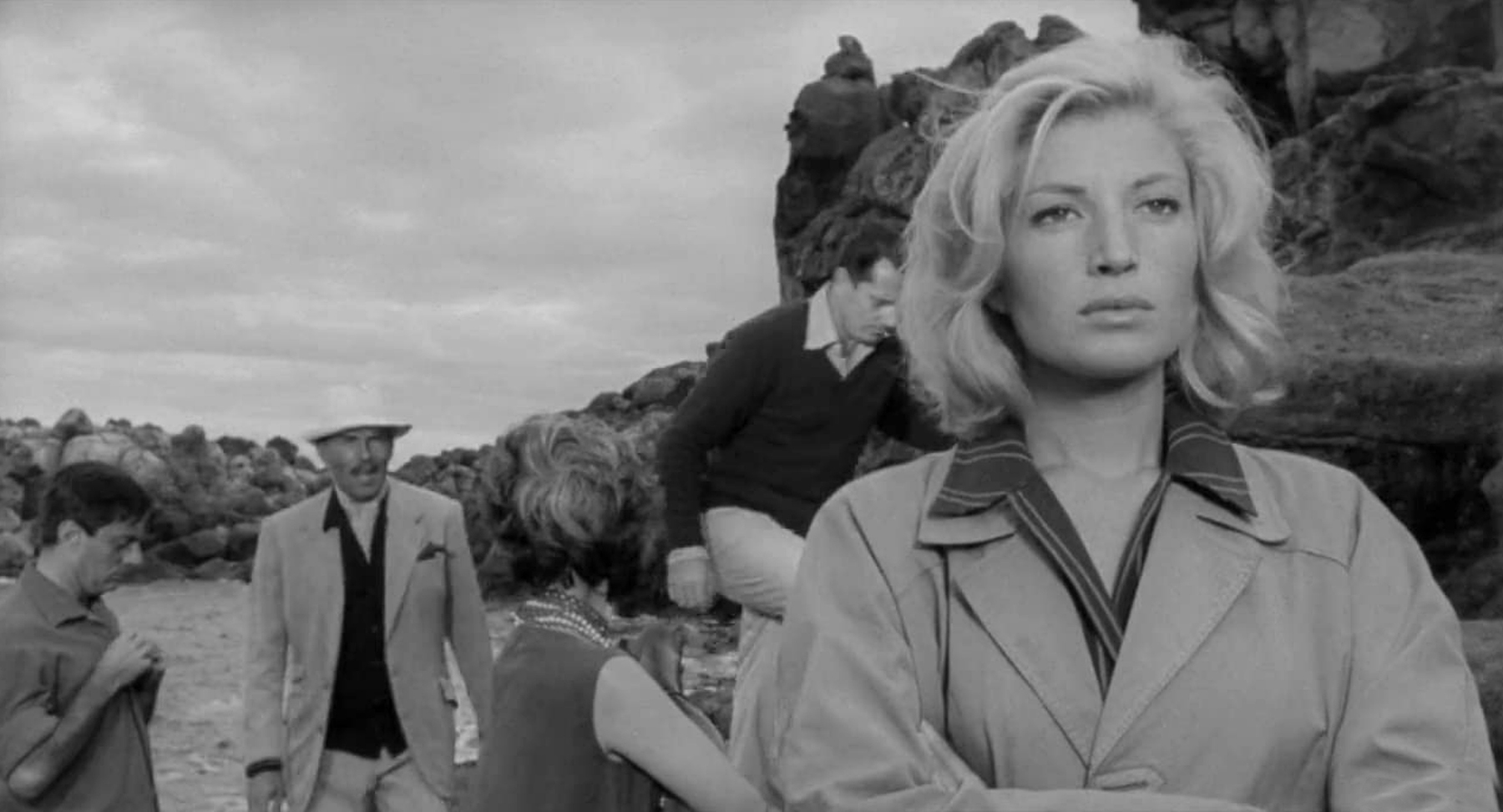
- Film
“L’Avventura” (1960): Antonioni’s ‘Scandalous’ Masterpiece turns 60
Booed at its first screening at the 1960 Cannes Film Festival, Michelangelo Antonioni’s L’Avventura represents a famous and notorious event in the history of that forum – and also an interesting case in film criticism and history of world cinema.
Critics and journalists, just like moviegoers, are entitled to their tastes, which may shift over time as a result of reevaluating a film from a new perspective or placing it in the broader context of the filmmaker’s oeuvre. That dynamic surely influenced the public perception of Antonioni. Though he had been making features and documentaries for over a decade, he first achieved critical acclaim and commercial success with L’Avventura.
The film made an international star of Italian actress Monica Vitti. Serving as his artistic muse, Vitti went on to star in two other Antonioni films, La Notte (1961), co-starring Marcello Mastroianni and Jeanne Moreau, and L’Eclisse (1962), with Alain Delon, which are now considered to be sort of a trilogy.
Nominally, the screenplay, based on a story by Antonioni, Elio Bartolini, and Tonino Guerra, concerns the disappearance of a young woman named Anna (Lea Massari) during a boating trip in the Mediterranean, and the subsequent search for her by Sandro (Gabriele Ferzetti), her architect lover, and Claudia (Monica Vitti), her best friend.
Defying rules of conventional cinema – it is a mystery with unsolved resolution – after the first reel, the film nearly forgets the missing girl. Anna disappears 26 minutes into the 145-minute-epic, the rest of the narrative offers a probing anatomy of the bond between Sandro and Claudia, during the search, and a critique of the emerging nouveau riche in Italian society, marked by the corruption of new money and the immorality (and amorality) of casual sex.
The film begins as a tale of two girlfriends on a carefree outing. Anna meets Claudia at her father’s villa on the outskirts of Rome before leaving on a yachting cruise. The first sign that the figures are too self-absorbed is when Anna and Sandro make love in his house, while Claudia is waiting for them downstairs. The trio then drives to the coast, where they are joined by two other wealthy couples.
The story is pervaded by the characters’ selfish dishonesty, as when Anna confesses to Claudia after her swim that the ‘whole shark scare was a lie’ in order to draw Sandro’s attention. The women begin to transform and change identities when Claudia shows admiration for Anna’s blouse, and Anna tells her to put it on and keep it, because ‘it looks better on her.’ Later on, Anna expresses her unhappiness to Sandro due to his long business trips, a complaint that he dismisses.
After Anna goes missing during a second swim, Sandro is offended by Claudia’s suggestion that Anna’s disappearance is a result of his neglect, but the ‘tragic’ event doesn’t prevent them from getting involved romantically. The search continues to different islands, including great visual sequences in Sicily’s Palermo, but no one seems to take Anna’s case seriously, except for Claudia. Upset that ‘it takes so little to change,’ she thinks it would be easier if they sacrificed and denied their mutual attraction, but Sandro sees no reason for it. Outside Noto, the couple stops at a deserted village and make love on a hill overlooking the town. Though Claudia remains torn between her feelings for Sandro and her friendship with Anna, the affair continues, and both seem passionately in love.
The last scene is particularly memorable, visually, and emotionally, amplifying the film’s overall cri de Coeur. Searching for Sandro at Taormina’s San Domenico Palace Hotel, Claudia finds him having sex with another woman on a couch. She runs off crying, and Sandro follows her onto the terrace. Sitting on a bench, unable to say a word, Sandro begins crying perhaps indicating a trace of hope. Claudia hesitatingly places her hand on his head, while looking out at Mount Aetna on the horizon.
As noted, despite the eventual canonization, the film got a harsh reception at its festival premiere. According to Vitti, ‘the screening was a real-life drama. Despite its serious tone, laughs erupted in a dark theater packed with critics and photographers.’ The laughs joined by boos during the long sequences, where nothing happened to further the plot. Reportedly, an upset Antonioni and a sobbing Vitti fled the theater. The next day, however, rather unprecedently, a letter signed by famous filmmakers and writers declared that L’Avventura was the best movie ever screened at Cannes.
Conceiving of the movie as an existential morality tale, Antonioni said that he wanted ‘to tell a story through images that show not the birth of erroneous sentiment, but rather the way in which we go astray in our sentiments. Our morals, myths, and conventions are old and outmoded, yet we respect them.’
L’Avventura is much like Fellini’s similarly-themed La Dolce Vita, which also describes a new ‘café society,’ populated by wealthy, bored, and spoiled characters, with too much money and leisure to spare. It may not be a coincidence that Fellini’s masterpiece was made in the same year as L’Avventura and then screened together in competition, ultimately winning the Cannes Festival’s Palme d’Or. What a year: Antonioni’s film won the festival’s Jury Prize.
By deploying the unique powers of film, L’Avventura influenced the very language and grammar of cinema, changing forever how subsequent films would be made and looked at. Arguably, very few films in history have broken the standard rules of filmmaking so elegantly and so subtly. Regarded as an innovative classic, L’Avventura has appeared on Sight & Sound’s prestigious list of the critics’ top 10 greatest films ever made three times in a row: It was voted second in 1962, fifth in 1972, seventh in 1982, and currently ranks #21 in the critics’ poll.

